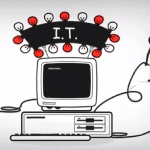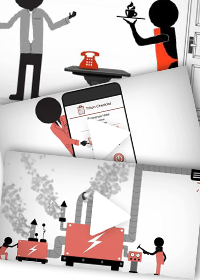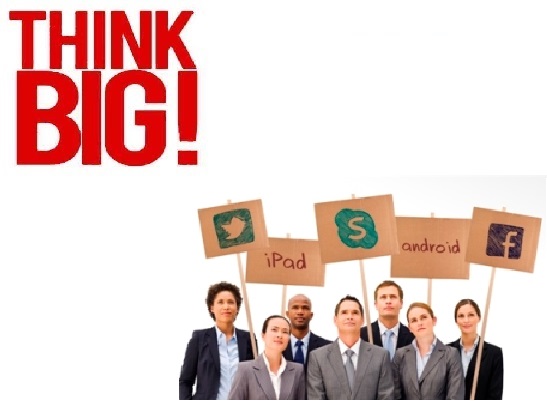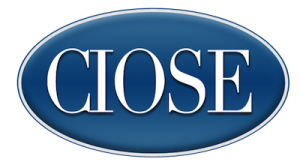Piyush Singh is the Chief Information Office (CIO) and Senior Vice President at the Great American Insurance Company—a property and casualty insurance company, and Vice President of it’s parent company, American Financial Group [NYSE:AFG]. Under his direction and vision, Great American’s IT department has transitioned from supporting a legacy IT environment to become a trusted player in the company’s business success—offering agility and adaptability to align with the executive vision. In this interview, Mr. Singh shares his observations on innovation in Indian software companies, product development, and how large IT companies could accelerate the pace of product innovation.
Piyush, you have been watching the Indian software industry over a period of time. What are some of the changes you see now especially in the context of the software product industry in India?
The Indian software Industry is the envy of many countries around the world, and numerous governments and business associations have been trying to emulate its model. It has made a significant difference in elevating the professional services job market and provided the necessary fillip to the country’s infrastructure—transforming sleepy suburbs into high-tech cities with world-class facilities. The Indian software Industry contributes $67B to the economy in direct revenue, but delivers a bigger economic impact (probably tenfold) when you think of all the tertiary employment it generates and the indirect revenues created.
Yet, this phenomenal growth has been a result of labor pricing arbitrage, and many of the large companies that lead the software services are today challenged by lack of innovation and intellectual property (IP). Yes, outsourcing and large services contracts are definitely attractive but unsustainable in the long-term. Sustainable growth and maintaining unique value propositions demand significant investment in IP—and this needs to be more than just systematizing processes. I do not see IT services companies investing in actual development of product portfolios that might address vertical markets or provide horizontal solutions. Typically, I see global services brands create deliberate pools of internal innovation that harnesses the knowledge of its workforce or buy IP-based companies to provide them the necessary scale for reach and investment. So far, I’ve seen neither processes here, but am hopeful that this will change.
Culturally, do you think Indians (and this is very broad considering our diversity) are risk takers and willing to start out businesses? Or are they averse to taking risks?
I don’t think so, and there are numerous examples of our appetite for risk—numerous Indians in the Silicon Valley have taken their start-ups all the way to public offerings. What I have noticed is, we tend to invest in real estate—really investing for the long haul.
Today, I find ourselves increasingly accepting entrepreneurship and its risks, even as senior executives leave large corporations to do something more meaningful, and different. But these new companies will need significant capital and gestation periods before they begin to show results. This is in contrast to the services industry growth that sets an average 20-30% growth every year—leaving start-ups struggling to showcase such growth. The risks and returns are completely different in a product company—Oracle, SAP, Microsoft, Apple are all shining examples of IP-led revenue-generators. Their valuation and market sizes are incredibly spectacular. But they didn’t grow into such successes overnight.
Product companies will constantly change business plans, product ideas, and offerings to meet the ever-changing market opportunities. These evolutions take time, effort, and capital—ask any Silicon Valley venture capitalist.
On the other hand, if you read the balance sheets of many of the services firms, they have idle cash, and great market reach. It will be a win-win for all if they use the cash to fund or accelerate the incubation of products that they can take back to their markets.
What is your take on emerging companies in the product space? We see, for example, many of them are developing apps and very few seem to be venturing into the enterprise or B2B space. Do you agree?
I agree completely. In the insurance space, for example, of all the companies out of India I’ve worked with, only a few have made any real IP investments—MajescoMastek, PlanetSoft (acquired by Ebix), L&T Infotech, and Mphasis. But if you see the revenue portfolio of the top 200 services firms out of India, the financial services industry is a leader in driving investments. And only a handful companies have made any IP-led investments. Strange, don’t you think?
What’s interesting is that it’s not that India doesn’t have the talent: every large US-based company (Microsoft, HP, Cisco, IBM) have a lot of product development out of India. The capabilities and talent definitely exists—we need the larger Indian companies to show the way. They should make use of the talent that exists in their own setups, sponsor ideation, build incubators and make a directional investment in product development. They should stand up to explain their actions and the promise it holds. Analysts might not like the idea initially as it does not fit in their current forecasting models but as they realize the potential and see results over time, they will warm up to the concept and probably push for higher investment. I would argue that Indian companies do bring in a lot of process expertise in any project that they manage, so they can definitely build processes that would seek ideation and lead to valuable IP.
What’s your view on innovation in the Corporate environments?
Innovation has become a necessity for existence. As Robert Murdoch, Chairman and CEO of News Corp aptly said, “The world is changing very fast. Big will not beat small anymore. It will be the fast beating the slow.” Innovation is being taken out of R&D labs and becoming the fabric of the entire company and an integral part of the culture at all levels. If it’s not happening, it can hurt them. Look at what’s happened to Kodak—they invented the digital camera concept but now the only value left is in the patents which they filed. Blackberry (RIM) is facing a similar situation – in May of 2008, of the corporate companies surveyed 82% of them were looking at buying RIM based Blackberry’s. Their lack of innovation in the world of user experience design has left them in a situation no one wants their company to be.
Do you think a major contributing factor in the last couple of years has been contributed by bandwidth availability, relatively easier capital and technology disruptions from areas like cloud computing? Have these leveled the playing field?
Well, these not only level the playing field but also give you an opportunity to differentiate your offering. For example, cloud computing levels the playing field, making it a lot easier for people to invest in or explore new products as long as you provide open integration points,a level of flexibility and a blueprint for future innovation. Commoditization brings prices down but forces you to decide on the USP that would help your company stand out. You need to balance commodity with strong uniqueness so you can leverage both benefits. People who are going to be nimble and fast, and people who respond to these paradigm shifts are going to emerge the winner. The key lies in how quickly you react to market forces and how adaptable you are. Any country that can produce a model of constant adaptability becomes a much more stronger player in the long haul.
Five years ago a typical software strategy didn’t take into account elements like user experience design, predictable analytics/big data, mobility and enterprise social networking. If you’re a ten-year old product company or a large services firm, it’s a little tougher to make a shift to embrace these elements. If you’re a smaller company though, and you’re nimble and watching these trends closely you can adapt to them quickly. It depends on how leading edge you are, because people are always talking in the context of ‘now.’ Mobility has been on the forefront since early 2008—but companies are still exploring mobile apps. Big data has been there for 3 plus years—but how many people are truly exploiting the value of this data? Enterprise social networking helps companies capitalize on people, collaboration and sharing better. It provides individuals more command and control—if the person at the lowest level comes up with a bright idea, everybody knows who to give credit to!
So you Piyush – if you had to give some advise to product companies or people who are venturing into the software product element India, what would you say?
- Identify a domain where you see that there is market opportunity and don’t look at what is currently being offered as a solution. Try to look 3 years ahead and try to build it around the emerging model of doing business—it’s about how you’re going to do business tomorrow, not how people work today.
- You’ve got to balance domain expertise with people from outside so that you can think differently. You can’t have people who think the same way all the time. You need to understand how to incorporate User Experience Design—making people react and say “It is obvious.” Product companies have the advantage of disrupting the existing ways and changing the model—that’s what DELL did with PCs, Amazon with the book store, and Netflix changed movie watching at home.
- You should be willing to find a charter partner who can help you to bring about change and break the current paradigm. Once you have this, you’re on the path to building a product that will succeed.
- Don’t just be happy with what you have and what you build. You really have to be dissatisfied with the present and galvanize resources into action. This requires a fundamental shift in the group mindset, how we operate and how the company is structured. We need to learn from the old Chinese saying ‘let a thousand flowers bloom’ – not just the management ranks!
- Don’t make random calls and hope that there will be sales. Learn the market, understand the potential buyer fully and then target with laser focus. Do not take a shot gun approach and hope that it succeeds.
Which 5 product companies or fields are you interested in meeting?
I would rather choose three fields that are of interest for me:
- Companies that are working in the insurance sector – what are they doing and what’s innovative
- Companies involved in infrastructure–what are you doing to improve the end user experience/reliability and availability in the modern complex world
- Companies that are involved in new and novel concepts that challenges any business model. I want to be challenged to look outside my standard thinking model.
If you are keen to meet with Piyush at NPC. Do drop in a mail to us at info@pn.ispirt.in and we will get back to you.






















